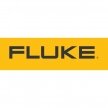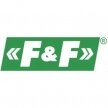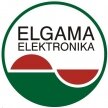-
Product Catalog
- Security and Surveillance Systems
- Automatic Circuit Breakers for Direct Current (DC) Circuits with Integrated Overload, Short-Circuit, and Voltage Stabilization Protection Functions
- Lighting with the help of electrical energy
-
Automation and Control Systems
- Automation control accessories
- Control components for automation and control systems
- Passive lifting | unloading | transporting magnets
- Signal converters | controllers for automation control | for control systems
- Touchscreens | panels for automation control | control systems
-
Power Contactors | Control Circuit Intermediate Relays
- Mini contactors for electric motor control
- Contactors | Electrical starters | For equipment control
- Electromechanical thermal relays | electrical equipment protection
- Contactors with enclosure and control buttons | for electrical equipment control
- Control coils for contactors | starters | electrical equipment control
- Adapters-converters for relays and contactors
- Additional contacts | Accessories for contactors
- Relays for electrical equipment automation control | monitoring
- Relay sockets | for connecting relays to the control system
- Relay modules | for the safe operation of electrical equipment
- Optical sensors | detectors for automation devices
- Automation control | Data transmission | Low current
- Sealing profiles | rubber | gaskets | strips
- Inflatable Liquid Storage Tanks | Reservoirs | Bladders
- Inflatable rubber plugs for sealing high-pressure plumbing pipes
- Electrical distribution and installation
- Solar Energy Generation and Management Equipment
- HVAC control solutions for heating and ventilation.
- Special products and accessories
- Other products
- Safety tools
- Quality used products
Electromechanical thermal relays | electrical equipment protection
- Read more
Electromechanical thermal relays are electrical protection devices that safeguard electric motors and other electrical equipment from overloads and extended operating times beyond permissible limits. Thermal relays work on the principle of thermal expansion: when excessive current flows through the motor, a bimetallic element inside the relay heats up, bends, and disconnects the power supply. These relays are often used in conjunction with electromagnetic contactors in industrial systems to protect equipment from overload or prolonged operation.
-
Read more
Pros:
Reliable overload protection: Electromechanical thermal relays efficiently protect electric motors from long-term overloads. When an excessive current flows for too long, potentially damaging the motor, the thermal relay automatically disconnects the power when it detects that the current exceeds a safe limit. For example, in industrial pump systems, the relay protects the motor from overheating if overloaded due to mechanical load.
Additional safety: Electromechanical thermal relays can act as a secondary protection measure in conjunction with electromagnetic contactors. This ensures that the equipment is protected from various faults, such as electrical disturbances, overheating, or improper operation modes.
Automatic reset: Some thermal relays can automatically reset once the motor or circuit cools down. This allows the motor to restart without human intervention once the overheating issue is resolved. This feature is valuable in continuous production lines where constant equipment operation is crucial.
Durability: Thermal relays are highly durable and can operate for many years without significant wear. They do not have complex electronic components, making them more resistant to extreme conditions, such as dust, moisture, or temperature fluctuations. For instance, they are often used in harsh environments where large industrial machines operate.
Easy integration: Electromechanical thermal relays can be easily integrated into existing electrical circuits and are often used in combination with contactors. This allows them to be simply connected to motor control systems without major modifications.
Cons:
Slow operation: Since electromechanical thermal relays use a bimetallic element, their operation can be slower compared to electronic protection relay solutions. This can be a drawback in systems where a quick response to electrical disturbances is necessary.
Only overload protection: Thermal relays are not designed to protect equipment from instantaneous short circuits. For that, additional protection measures, such as fuses or circuit breakers, are required, which can quickly respond to such faults. For instance, in the case of a sudden short-circuit situation, the thermal relay would not react fast enough to protect the system.
Manual reset required: In many cases, when the relay trips due to overload, it must be manually reset for the system to restart. This can cause production downtime and require additional work from technical staff, especially in industrial environments where quick system restoration is essential.
Temperature dependence: Electromechanical thermal relays operate based on thermal expansion principles, making them sensitive to environmental temperature changes. For example, at very high temperatures, the relay might trip earlier than expected, while in very low temperatures, it may not operate on time.
Examples:
Industrial motors: Electromechanical thermal relays are often used in industrial electric motors to protect them from long-term overloads. For example, in factories using large motors, relays protect the equipment from overheating when the motor operates beyond its set load.
Pumps and compressors: Thermal relays are ideal for protecting pumps or compressors where electrical current overloads can damage the equipment. If a pump experiences excessive loading, the thermal relay disconnects the system to protect the motor from damage.
HVAC systems: Electromechanical thermal relays are commonly used in HVAC systems to protect fans and compressors from overload. If the compressor overheats, the relay disconnects the power supply until the equipment cools down.
Summary: Electromechanical thermal relays are reliable and durable protection devices that safeguard electric motors and equipment from overloads. They are easily integrated into existing systems and operate on a simple thermal expansion principle. While reliable and effective for long-term overloads, their slower operation and sensitivity to temperature mean that additional protection measures may be needed in some cases.
No items found.
US IN SOCIAL NETWORKS
























